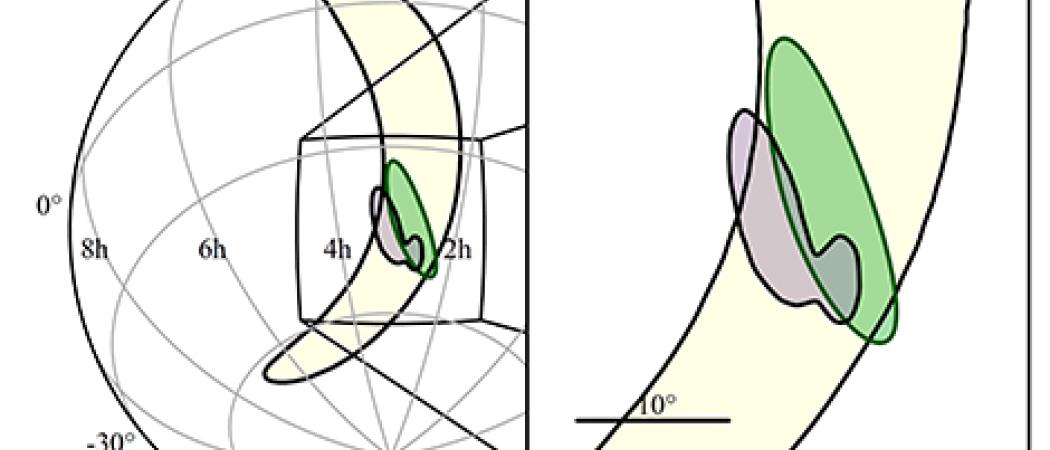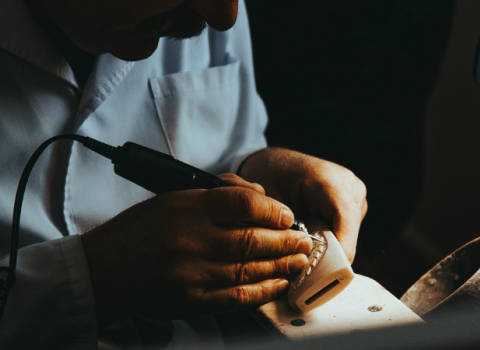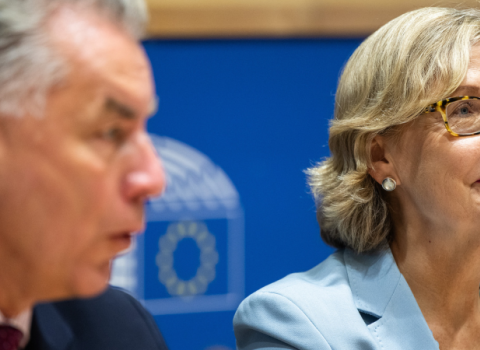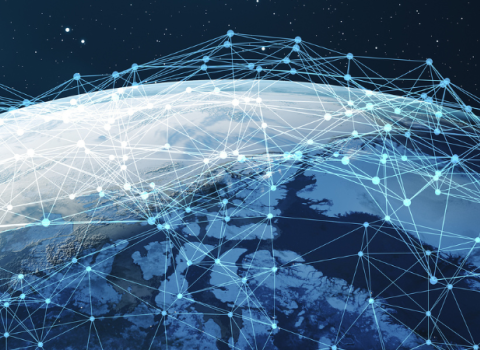Scientists in the LIGO and Virgo collaborations have achieved the first ever three-detector observation of the gravitational waves emitted by the merger of two black holes.

This is the first signal detected by the Advanced Virgo instrument, which joined observing runs by the two LIGO detectors on 1 August, and confirms that it is fully operational. It opens the way to considerably more accurate localization of the sources of gravitational waves. The discovery is published by the international collaboration that runs the three detectors, including teams from the CNRS, in the journal Physical Review Letters. The announcement was made at a press briefing during a meeting of the G7-science1 in Turin, Italy. On the very same day, the CNRS awarded two Gold Medals to physicists Alain Brillet and Thibault Damour for their major contributions to the detection of gravitational waves2.
Black holes are the final stage in the evolution of the most massive stars. Some black holes form a pair, orbiting around each other and gradually getting closer while losing energy in the form of gravitational waves, until a point is reached where the process suddenly accelerates. They then end up coalescing into a single black hole. Merging black holes have already been observed three times by the LIGO detectors, in 2015 and early 20173. This time, three instruments detected the event on 14 August 2017 at 10:30 UTC, enabling vastly improved localization in the sky.
This new event confirms that pairs of black holes are relatively common, and will contribute towards the study of such objects. The two black holes, with masses 25 and 31 times that of the Sun, coalesced into a black hole of 53 solar masses, while the equivalent of 3 solar masses was converted into energy in the form of gravitational waves. The event took place at a distance of about 1.8 billion light years from Earth, which means that the gravitational waves traveled through space for 1.8 billion years before being detected by the Advanced LIGO detector located in Louisiana (USA), then 8 000th of a second later by the second LIGO detector in Washington State (USA), and finally 6 000th of a second after that by the Advanced Virgo detector near Pisa (Italy).
The contribution of a third instrument, Advanced Virgo, has made it possible to significantly improve the localization of the astrophysical events that give rise to gravitational waves. These extremely violent events can in certain cases cause the ejection of very hot matter that can be seen using optical telescopes. With only two gravitational wave detectors, the region of sky that needs to be searched covers an area equivalent to several thousand times the surface area of the full Moon. Now, thanks to Advanced Virgo, this area is approximately ten times smaller, while the accuracy of the estimated distance of the source has also been increased by a factor of two. This significantly improves the possibility of observing signals with other instruments.
For this event, combining the arrival times with the amplitude of the observed signals made it possible to establish that the region of the sky containing the source had a size of 60 square degrees4, which was searched by 25 groups of astronomers. As for previous events, no optical signals were detected.
Another feature of the Virgo detector is its orientation, which differs from that of the two LIGO instruments. This allows new tests of Einstein's general theory of relativity, which describes the gravitational force. General relativity predicts that as a gravitational wave propagates, space is stretched in one direction while contracting in another, rather than, for example, deforming in just one direction or in all directions at once, as predicted by alternative theories. Analysis of the observed signals shows that this is indeed the case. It will be followed by other, more extensive tests of general relativity.
Pending fresh observations in autumn 2018, the first data from the three-detector network are still being analyzed and should soon be the subject of further announcements.
The Advanced Virgo instrument is principally cofunded by CNRS in France and the Istituto Nazionale di Fisica Nucleare (INFN) in Italy. The Virgo researchers work together in the eponymous collaboration, which includes over 250 physicists, engineers and technicians belonging to 20 European laboratories, including 6 at CNRS in France, 8 at INFN in Italy, and 2 at Nikhef in the Netherlands. The other laboratories involved are Wigner RCP in Hungary, the POLGRAW group in Poland, a group at the University of Valencia (Spain), and EGO (European Gravitational Observatory), near Pisa, Italy, where the Virgo interferometer is located. After several years of upgrading work and several months of tests, Advanced Virgo started observing the sky on 1 August 2017, joining Advanced LIGO. This detection is the outcome of a quarter of a century's investment by CNRS and INFN in this major facility.
LIGO (Laser Interferometer Gravitational-Wave Observatory) is an observatory dedicated to gravitational waves and is composed of two identical interferometers located in the US. The upgraded version of these detectors (Advanced LIGO) resumed operation in September 2015. The LIGO Scientific Collaboration (LSC), a group of over 1000 scientists working at universities in the US and 14 other countries, was formed around these instruments. It works hand in hand with the Virgo collaboration. Since 2007, scientists from both groups have analyzed data and published findings jointly.
The scientific publication of the LIGO and Virgo collaborations announcing the discovery is co-authored by 76 scientists from six teams from CNRS and associated universities:
- Laboratoire AstroParticule et Cosmologie (Université Paris Diderot/CNRS/CEA/Observatoire de Paris), Paris;
- Laboratoire Astrophysique Relativiste, Théories, Expériences, Métrologie, Instrumentation, Signaux (CNRS/Observatoire de la Côte d'Azur/Université Nice Sophia Antipolis), Nice;
- Laboratoire de l'Accélérateur Linéaire (CNRS/Université Paris-Sud), Orsay;
- Laboratoire d'Annecy de Physique des Particules (CNRS/Université Savoie Mont Blanc), Annecy;
- Laboratoire Kastler Brossel (CNRS/UPMC/ENS/Collège de France), Paris;
- Laboratoire des Matériaux Avancés (CNRS), Villeurbanne.
On 27 September 2017, CNRS awarded a double Gold Medal to the physicists Alain Brillet and Thibault Damour for their major contributions to the detection of gravitational waves2.





 A unique international forum for public research organisations and companies to connect their external engagement with strategic interests around their R&D system.
A unique international forum for public research organisations and companies to connect their external engagement with strategic interests around their R&D system.